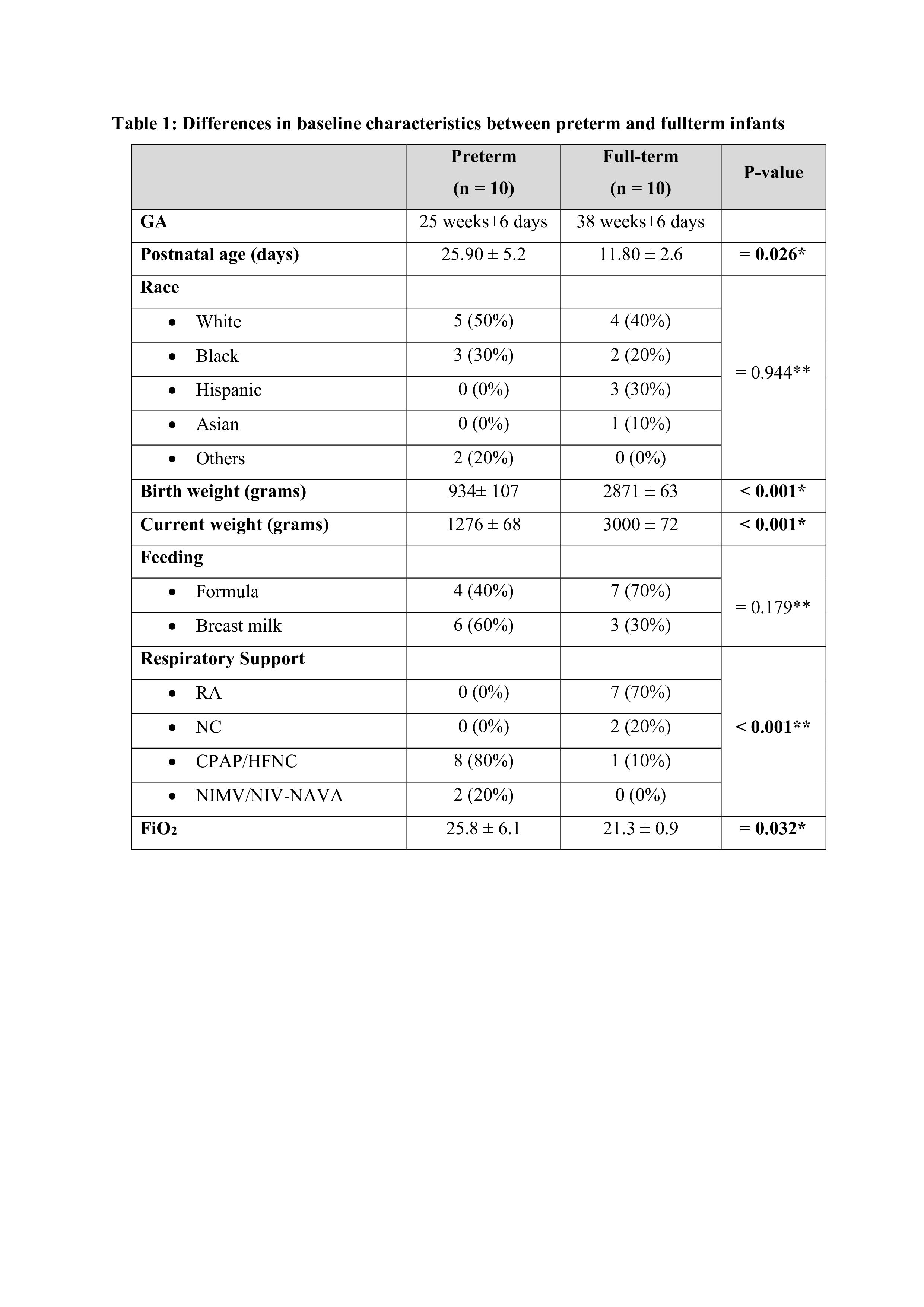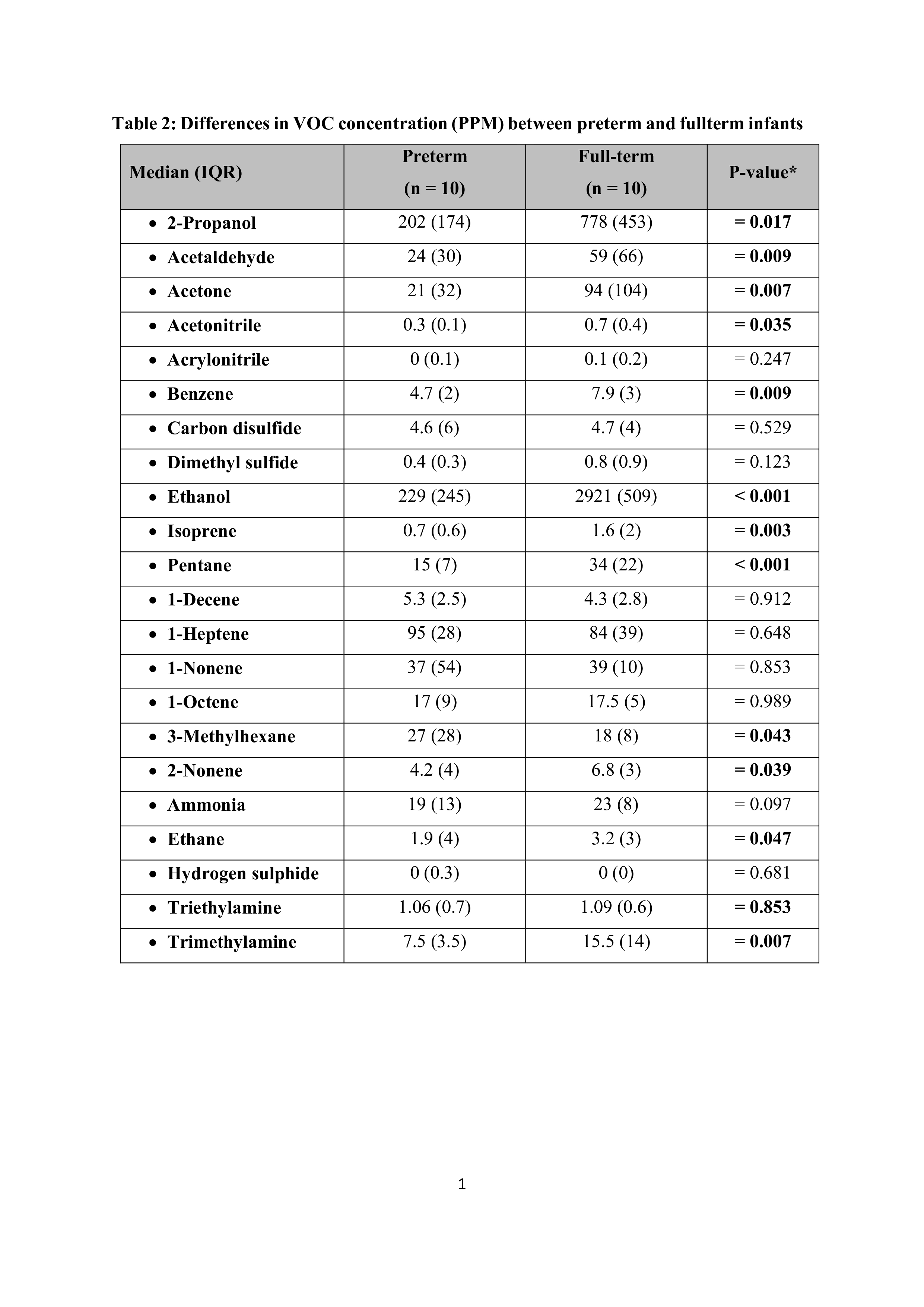Neonatology
Session: Neonatal General 6: POCUS, Technology in NICU
159 - Volatile Organic Compounds in Exhaled Breath in Early Infancy: A Pilot Study
Sunday, May 5, 2024
3:30 PM - 6:00 PM ET
Poster Number: 159
Publication Number: 159.2173
Publication Number: 159.2173

Mohsen A.A. Farghaly, MD
Neonatologist
Cleveland Clinic Children's
Cleveland, Ohio, United States
Presenting Author(s)
Background: Volatile organic compounds (VOCs) have been used in adults for diagnostic purposes for many diseases. A few studies were able to measure VOCs in infants’ stool or urine samples. It is not known if VOCs can be collected from breath samples of non-intubated infants.
Objective: To assess VOCs in breath samples collected non-invasively from preterm and full-term infants.
Design/Methods: This was a prospective pilot study that included twenty newborn infants; ten subjects were preterm infants and ten were fullterm infants. Infants with suspected or diagnosed metabolic or gastrointestinal disorders were excluded. After achieving full enteral feeding, a fifty milliliters of exhaled breath condensate sample were collected from the incubator air or expiratory side of the breathing tubes for each infant using glass syringes. The samples were analyzed for VOCs using a selected-ion flow-tube mass spectrometer (SIFT-MS), the model used was Voice 200 ultra from SYFT Technologies. The SIFT-MS instrument was run in the selected ion mode (SIM); this is where the concentration of the VOCs is measured by monitoring the product ion peaks.
Results: Clinical and demographic data of enrolled infants are presented in table 1. Twenty-two VOCs were measurable in all samples (table 2). There was a significant difference between preterm and fullterm infants for the 2-propanol, acetaldehyde, acetone, acetonitrile, benzene, ethanol, isoprene, pentane, 3-methylhexane, 2-nonene, ethane, triethylamine and trimethylamine compounds, table 2.
Conclusion(s): It is feasible to measure VOCs in breath samples of term and preterm non-intubated infants. Term infants express different concentrations than preterm infants. Further studies are needed to examine the utility of measuring VOCs to identify neonatal diseases and predict outcomes.


